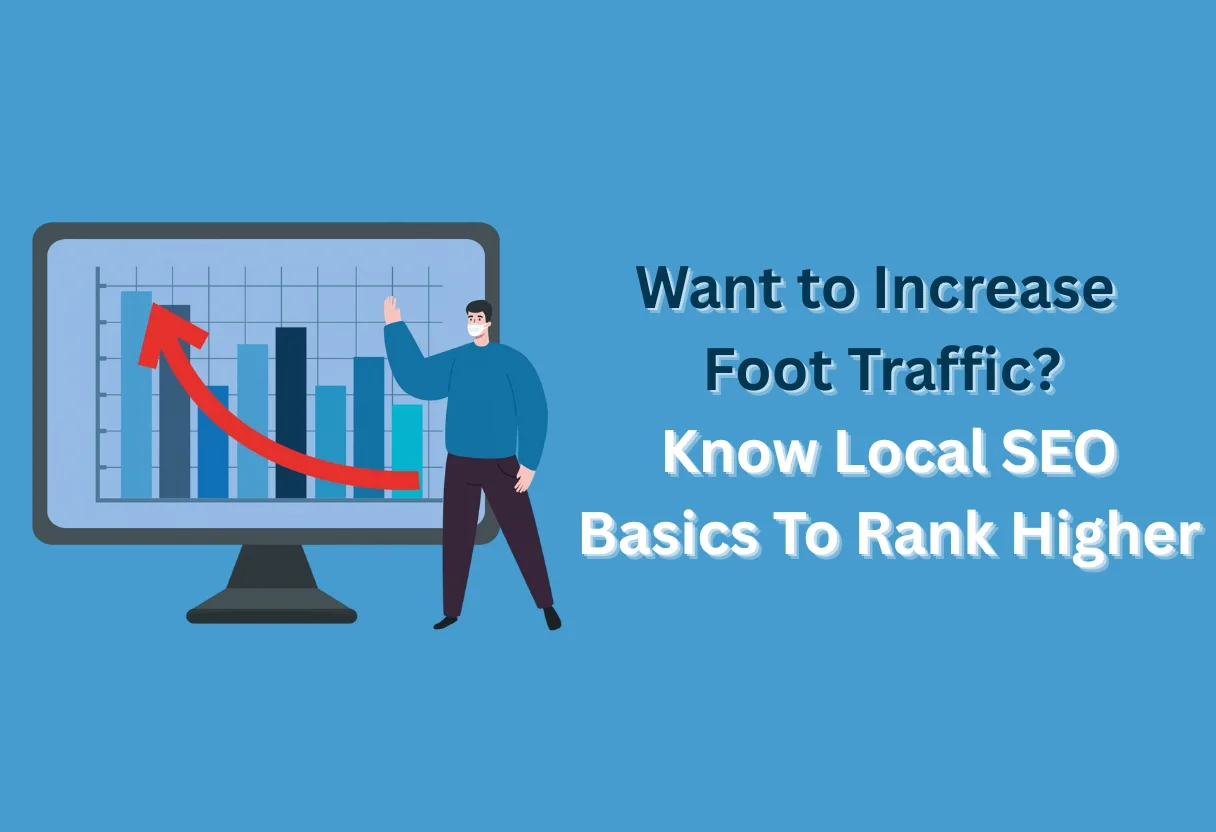The first thing we Google Search when we are hungry is a good eatery, and that too a Local one. This is where Local SEO comes in. SEO gives the due recognition that your organization aspires to.
So, it is high time, your business gets its due by implementing Local SEO and SEO strategy ultimately getting its low-hanging fruit. Without further ado, let’s get down to the basics of what is Local SEO and why it is important.
Define local SEO
According to Tecmark, 45% of Google searches are for local businesses. This means most users are proactively searching for local businesses. Follow that up with a call or visit the business within 24 hours.
So, Local SEO optimizes the business’s online presence to increase search visibility and attract local users and potential customers within your geographical area. Okay, we are getting that it is bringing in the foot traffic. But why is Local SEO important and how it can up the SEO game?
Why Local SEO is Important?
Searches with local intent are seeing a rise. One of the reasons why 4 out of 5 consumers use the mobile searches to find local information.
Local SEO helps in making your business stand out, even when you don’t have a website. It helps drive more foot traffic to your premises through quality leads and online directories. Don’t believe us, study these facts:
76% of people who Use a smartphone to look for anything nearby visit the place of business within a day.
Online searches for local companies or services account for 46% of all searches.
A purchase is the consequence of 28% of local searches.
Since the customers are scouting for your product and services, therefore there is a high conversion rate.
Additionally, local SEO influences consumer choice in your favor. The more knowledge they have about your company before they come, the more credible you appear to them.
In short, customers are willing to pay you for your services. If you are not appearing in Local SEO, you are losing out on a lot of things in your entrepreneurial and SEO services journey.
Wow!! Local SEO has its share of benefits. To top it, better ranking SEO websites will get exclusive mention. Want to know how, read on!!
Also Read – List of 11 Most Common SEO Mistakes
How does local SEO Work?
Local SEO works on two halves, as Google shows two types of search page results. One is composed of local map packs while the other are local SERPs.
Let’s get a good look closely.
Local pack refers to the top 3 of the best search rankings as shown below. The remaining links are organic search results. They usually appear below the map results

Now we know how Local SEO works. But how can you have more online visibility?
Answer: Through keywords, inbound links and doing local keyword research. So, let’s discuss that.
Local SEO keyword research
You would always like to crack what people would type in their Google searches. This is exactly what local SEO keyword research is.
The process of understanding what people search for the local services is called local keyword research. Let’s get this one step at a time.
Step 1: Find service-based keywords
Most people don’t think out of the box. For example, by putting other keywords apart from seed keyword, businesses can generate traffic.
For example, you have a floral business. So your keywords will range from flower to florist. But you can put these keywords also like:
- Send flowers
- Funeral flowers
- flower delivery near me
- Mother day flowers
To expand this list, use the above keywords as ‘seeds’ to find more services. You can use GetKeywords which is the easiest tool to access.

Step 2: Check search volumes
You may see nationwide search volumes using keyword research tools. You must use the GetKeyword tool if you want search volumes for your state, city, or municipality.
Step 3: Check for local intent
Searchers with local intent desire to visit neighboring stores. If that isn’t the case for your products or services, there isn’t a chance for local SEO.
Google a query, then look through the results to see whether it has a local focus.
If there is a map pack and/or some local blue link results, it definitely has a local intent.
Step 4: Assign keywords to pages
For all of your service keywords, it’s unlikely that your homepage will rank. Therefore, you’ll need to use various pages to target some.
Consider the services that the URLs map to when assigning keywords to them.
Assign them to various pages if they correspond to very different services. Like assign such as “funeral flowers” and “deliver flowers nearby.”seperately.
Assign them to the same page if they correspond to the same service, such as “mother’s day flowers” and “father’s day flowers,” for example.
Local SEO tools
We have got a generic overview on how to conduct local keyword research. But where to do it? Well here are some tools.
Have a look at them:
- Google Business Manager
- GetKeyword
- Google Search console
- Ahref’ Rank Tracker
- Ahrefs Link intersect
- Grid my business
- Yext
- Google keyword planner.
Okay, now I am understanding the gist of things. But to rank in SERPs, there are factors which should be included in our webpages, which will help us rank. Let study them and incorporate in our Local SEO strategies.
Factors on which Local SEO rank
To rank in SERPs there are two ways first there is a pack and the second regular organic results. There are different ranking elements based on where you want to rank, although some are significant for both.
One study found that while 40% of local search clicks go to organic search results, 33% of local search clicks go to Local Pack results. Making both still very useful for enhancing your local online presence.
Below are some factors which SEO believes to be important factors for ranking:
Links
Google has time and again given credibility to links from other websites. Also, termed it as one of the major factors for ranking in SERPs. Plus studies have shown that there is a mutual relation between links and organic traffic.
Getting backlinks is equivalent to getting votes for your website from others.
Best Practices of SEO:
- Obtain links from other highly ranked websites
- Obtain links from your rivals.
- acquire local citations (these often have links)
- Unlinked mentions in a claim
- Recover lost links by referring visitors to the most recent iteration of your sites.
Reviews
Reviews are nothing but a short paragraph on the product. Its where customers talk about the experiences/ impacts created by the product. It seems the most important factor.
But, according to BrightLocal only 17% of SEOs deem reviews the most important factors for map ranking.
Although, the reviews are not only for ranking but also to build trust among customers.
Best Practices:
- Don’t ask for paid reviews as it is against Google’s terms.
- Don’t discourage bad reviews as Google wants a fair platform in SEO.
- Always remind customers to leave reviews.
- Respond to reviews to build trust.
NAP Citations
A NAP Citation is nothing but listing your business’s name, address and phone number online. This helps in appearing in various business directories and social media profiles.
Though, it is not a very dependent factor according to Bright Local having a mere 7% importance.
But then also it will help searcher’s to discover your business online.
Also if you appear in the directories, then it would be far easier for anyone to come across your business page and products.
Best Practices:
- Get listed in various data aggregators
- Submit to other players which are popular in your industry.
- Keep your citations consistent in every social website.
GMB profile
According to BrightLocal, GMB profile is an essential tool to enlist your business.
Your Google Business Profile, according to 36% of SEOs, is the most significant ranking criteria for the map pack.
So imagine how important of a rank factor it is!! So, what is GMB optimization?
A local listing that includes information about your company is the Google Business Profile. Your company can be listed for free and appear in Google Maps and the map pack.
Best Practices:
- When choosing your business category, be thorough.
- Set your own working hours (including holiday hours)
- Insert your address (if you have a storefront)
- Decide on your service area (if you visit or deliver to customers and clients)
- Include the items or services you provide.
- Add images
- Request feedback from clients
On-Page
On-page directly reflects SEO scores. A high SEO score indicates that your website complies with the requirements for effective search engine optimization. That directly reflects on your rankings in Local SEO.
So, little modifications on the content in the page helps organic ranking in SERPs.
Best Practices:
- Customize your pages for search intent.
- Include every information of NAP in your website.
- Write rankable meta descriptions and titles.
- Use SEO friendly URLs.
- Optimize your pages according to the website.
- Internal linking should be present as well as rectify any broken links.
- Include details that are relevant to the searchers.
Now we have come to the end of the basics of Local SEO, but there is still some work to be done to improve Local SEO rankings. What are they?
What work should be done to improve Local SEO rankings?
Local SEO may raise your website’s authority, increase trust signals, and help you establish authority in your neighborhood.
It is more difficult to acquire directory links if your company operates in a specialized field or a remote region. In this situation, based on what is pertinent to your organization, you can try more specialist directories or look at various link-building strategies. For illustration, you could:
- Post as a guest on local blogs
- participate in forum posting
- Sponsor local events
- Collaborate with local influencers by getting in touch with them.
- Respond to pertinent Quora questions and include a link to your website.
- Engage in social media activity and communication by participating in contests.
Frequently Asked Questions
1) How to find your local traffic?
You can employ the following methods to increase your traffic:
1) Facebook Ads / Facebook Pay Per Click ads.
2) Google Ads / Google Content Network.
3) Rank Higher in Google Maps.
4) Content Marketing (i.e. blogging)
5) Social Media
2) What are local SEO citations?
Any internet reference to the name, address, and phone number of your company is a local citation. Citations can be found everywhere people might go for information about nearby firms, including business directories and social media platforms.
3) How to local Seo?
- Assess Your Services and Products
- Audit Your Current Website
- Research Common keywords
- Take Stock of Your Services and Product
- Create localized landing pages
- implement on-page SEO
- identify geo-specific keyword
- Enhance your Google My Business listing by adding the important company information to directory listings.
4) What is the local listing in SEOs?
A local business listing in SEO is nothing but the appearance of the online presence of your business with name, address,and phone number in various websites,apps and blogs.
5) What is gmb in seo?
An important strategy in Local SEO is to verify your business in Google My Business. Your chances of appearing in Google’s Local Pack, Local Finder, Google Maps, and organic rankings in general can rise by signing up for Google My Business.
Conclusion
It is a struggle to remain on top of result pages when you are just starting out. On top of that Local SEO is critical for your success in business.
Right from-reviews, local rankings, content- people watch out everything like a hawk. So, to boost your local rankings you have to be very vigilant towards your service and product.
Apart from this, don’t rely only on web optimization and Citations. There are other ways too. Like, you can build relationships with other local businesses and create an ecosystem where the other business is your customer.
For that purpose, you can use local practices for SEO in B2B. Give your business the best shot you can while getting updated.







